May 28, 2025 | 19:15 GMT +7
May 28, 2025 | 19:15 GMT +7
Hotline: 0913.378.918
May 28, 2025 | 19:15 GMT +7
Hotline: 0913.378.918
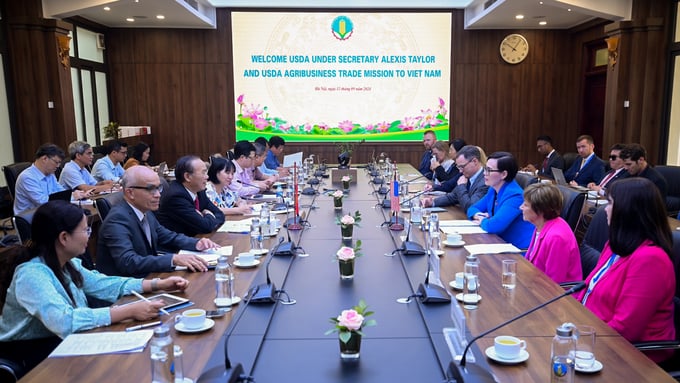
Working session between Deputy Minister of Agriculture and Rural Development Phung Duc Tien and the USDA on September 12. Photo: Tung Dinh.
This week marks the first anniversary of Vietnam – U.S. Comprehensive Strategic Partnership. In celebration, USDA Under Secretary Alexis Taylor led the largest-ever U.S. agricultural trade delegation to Vietnam, which included representatives from 36 companies, 25 associations, and 9 state Departments of Agriculture.
USDA views this visit as an opportunity to strengthen trade relations, exchange advanced solutions for enhancing agricultural value chains, promote digital transformation, and boost global competitiveness.
During discussions with the USDA, leaders of the MARD highlighted that, in the first eight months of 2024, Vietnam’s agricultural, forestry, and fishery exports to the U.S. reached 8.5 billion USD — an increase of nearly 31% compared to the same period in 2023. Key exports included wood products, seafood, and cashew nuts. Conversely, imports of agricultural products from the U.S. to Vietnam totaled 1.9 billion USD, marking an increase of nearly 28%, primarily comprising animal feed, vegetables, and wheat.
“These figures reflect the strong growth and potential for sustainable cooperation between our two countries. We are confident that our partnership in agriculture will continue to expand, bringing significant benefits to both nations, promoting sustainable development, and enhancing Vietnam’s international competitiveness,” stated Deputy Minister Tien.
Vietnam places significant importance on opening its market for agricultural products and has made notable progress, such as the U.S. allowing the import of fresh coconuts and grapefruit in 2023. In July 2024, Vietnam also opened its market to grapefruit, peaches, and nectarines from the U.S. Currently, agencies under the MARD are finalizing procedures for additional products, including oranges, tangerines, and seedless lemons.
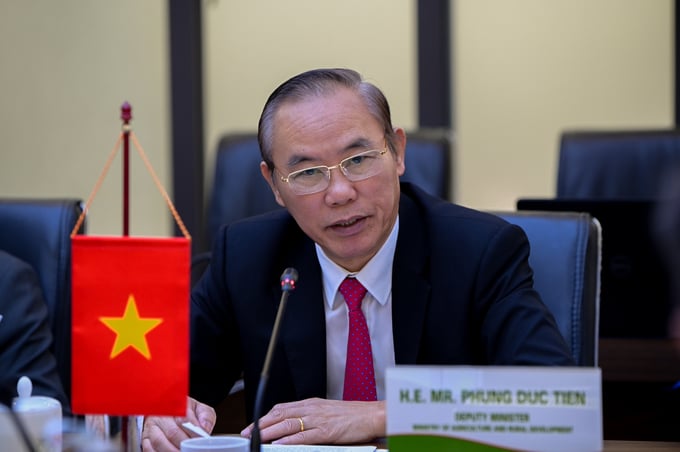
Deputy Minister Phung Duc Tien: “The excellent cooperative relationship between Vietnam and the United States in the agricultural sector brings benefits to both countries.” Photo: Tung Dinh.
Regarding animal products, Nguyen Van Long, Director of the Department of Animal Health, noted that Vietnam has approved the import of 560 animal products from the United States, the highest number among the 26 countries whose animal products are imported into Vietnam.
However, Director Long pointed out that the trade balance for animal products remains uneven. He expressed hope that U.S. authorities would facilitate more favorable conditions for exporting Vietnamese animal products to the U.S. market. Additionally, he hopes that the U.S. will share its expertise in disease control in livestock farming and in combating antibiotic resistance.
Le Thanh Hoa, Deputy Director of the National Agro-Forestry-Fisheries Quality Assurance, Processing and Market Development (NAFIQPM), reported that catfish exports to the United States decreased by about 30% in the first eight months of 2024 compared to the same period last year. Since catfish is a major export product, the Ministry of Agriculture and Rural Development has proposed that the USDA provide support to promote the product to international consumers.
Acknowledging the feedback from the MARD, Under Secretary Taylor stated: “With the involvement of the U.S. Embassy and the USDA Foreign Agricultural Service in Vietnam, we will work to resolve these obstacles promptly to ensure a balanced trade relationship between our two countries.”
Northern Vietnam recently faced typhoon Yagi, the most severe weather event in the past 30 years. As of 7:00 a.m. on September 12, the death toll and number of missing persons in the northern provinces had risen to 325, with 807 people injured and over 253,100 hectares of rice, crops, and fruit trees damaged.
Leaders from the MARD noted that the aftermath of typhoon Yagi underscores the increasingly extreme and unpredictable nature of climate change. In this context, farmers, disadvantaged communities, and ethnic minorities are the most vulnerable and bear the brunt of such disasters.

USDA Under Secretary Alexis Taylor understands that climate change is an existential challenge for Vietnam. Photo: Tung Dinh.
The USDA representative acknowledged that climate change poses a significant challenge for Vietnam. “The recent impact of typhoon Yagi demonstrates the urgency of mitigating and responding to natural disasters,” stated the USDA Under Secretary. “The USDA is eager to strengthen our partnership with Vietnam to help address these challenges and build resilience against disasters.”
Vietnam’s proactive approach to combating climate change has been highly appreciated, not just within the region but also on a global scale, particularly through the promotion of science and technology in agriculture.
Active involvement in the Sustainable Food Production Alliance will further enable Vietnam to access vital tools for implementing advanced farming methods, thereby reducing the adverse impacts of climate change.
Tran Dinh Luan, Director of the Department of Fisheries, stated that the department has received significant support from the United States Agency for International Development (USAID) to enhance the industry's capacity. This support has contributed to developing sustainable models for the fisheries sector, reducing natural exploitation, increasing aquaculture, and addressing plastic waste. Looking ahead, the Department of Fisheries hopes to receive further guidance on marine farming technology, a field with substantial potential in Vietnam.
Additionally, Tong Xuan Chinh, Deputy Director of the Department of Animal Husbandry, noted that starting January 1, 2025, Vietnam will ban the use of antibiotics in animal feed. This transition necessitates replacing antibiotics with feed derived from plants, herbs, or seaweed. Mr. Chinh expressed hope for support from the U.S. in developing these alternatives.
In crop production, the USDA has provided 4.4 million USDA in funding for the "Fertilize Right" program, which aims to help Vietnamese farmers access modern technology, optimize fertilizer use, increase productivity, reduce costs, and protect the environment.
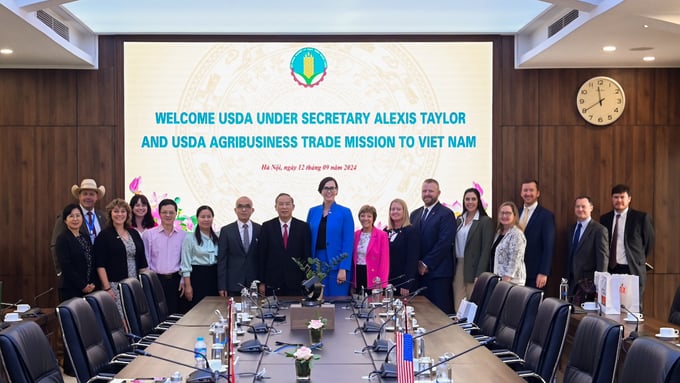
The MARD and USDA representatives took a commemorative photo. Photo: Tung Dinh.
Deputy Minister Phung Duc Tien expressed his appreciation for the “International Year of Women Farmers” initiative launched by the U.S., highlighting it as a significant effort to promote gender equality and enhance the role of women in sustainable agricultural production.
“Women play an essential role in Vietnam’s agriculture, particularly in the livestock and crop sectors, on par with men. We are committed to supporting USDA’s activities under this initiative,” he said.
Responding to Deputy Minister Tien, Under Secretary Taylor expressed her gratitude for Vietnam’s support of the initiative through the United Nations member states. Following the success of the event celebrating the “International Year of Women Farmers” in August, USDA leaders believe that Vietnam will be a key partner in the program, helping to expand the role of women in agricultural production.
Taylor emphasized the importance of establishing favorable policies between the two countries to enhance the role of women in ensuring food security.
Deputy Minister Phung Duc Tien thanked USDA Under Secretary Alexis Taylor and the US agricultural trade delegation, expressing his belief that the delegation will play a crucial and active role in fostering agricultural cooperation between Vietnam and the United States.
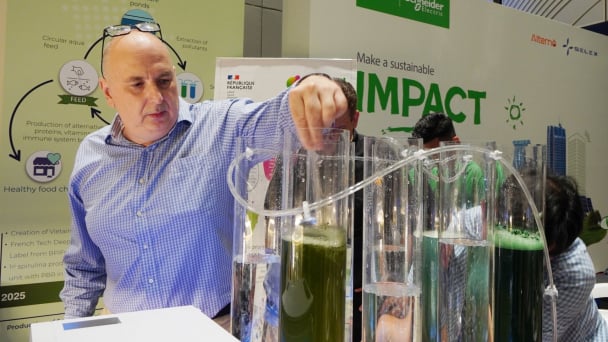
(VAN) On May 27, La French Tech Vietnam (the French startup and innovation community in Vietnam) held the French Tech Summit Vietnam 2025.
/2025/05/27/4731-2-223159_980.jpg)
(VAN) No votive paper, no styrofoam, no plastic bags, no plastic bottles, and no single-use plastic trays are the key rules tourists should keep in mind when visiting Con Dao.
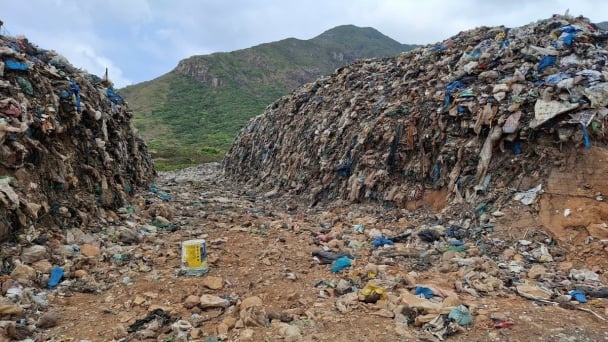
(VAN) In the fight against plastic pollution, Vietnam has been demonstrating a proactive, pioneering, and active role in addressing the greatest environmental challenge today.
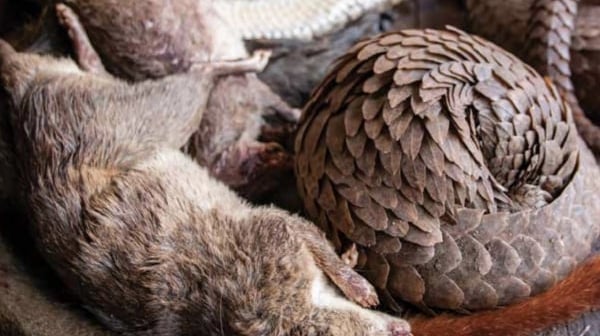
(VAN) The WOAH guidelines provide a vital tool for risk chain analysis, covering the extraction, transportation, consumption, and handling of confiscated wildlife.

(VAN) World Environment Day 2025 is launched by the United Nations Environment Programme (UNEP) with the theme 'Beat Plastic Pollution'.
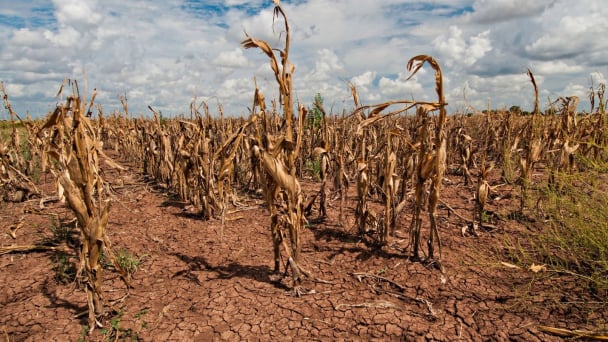
(VAN) As climate whiplash reshapes yields, experts say data-driven tools and targeted relief are critical to feed America.
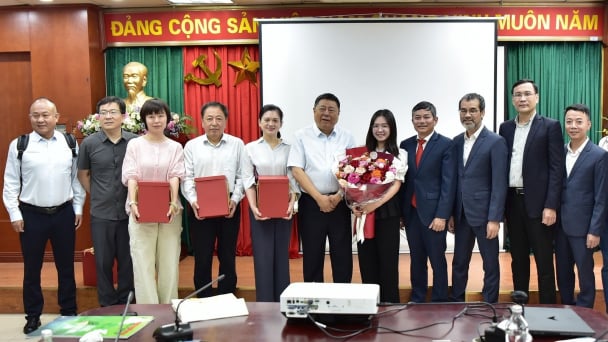
(VAN) The alignment in goals and operational direction between the Vietnam Agriculture and Nature Newspaper and Shaanxi Daily opens up promising prospects for journalism and media cooperation.